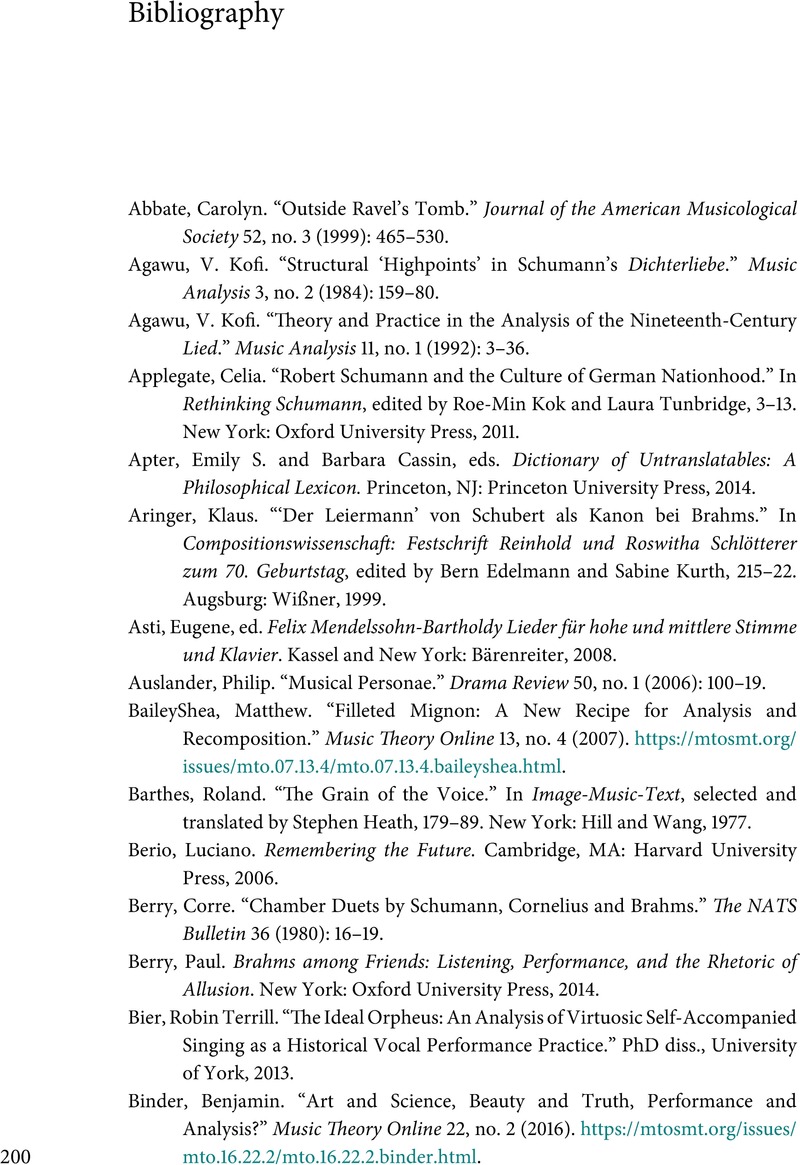Book contents
- The Lied at the Crossroads of Performance and Musicology
- The Lied at the Crossroads of Performance and Musicology
- Copyright page
- Dedication
- Contents
- Figures
- Tables
- Music Examples
- Contributors
- Foreword
- Acknowledgments
- Introduction
- 1 In Search of Song
- 2 Max Heinrich, “Wizard of Song”
- 3 Fragmenting Frauenliebe und -leben
- 4 Robert Schumann’s “Ich grolle nicht”
- 5 Schubert’s Mignon and Reimann’s Mignon
- 6 Locating the Wanderer’s Solitude in Choral and Nonsolo Performances of Winterreise
- 7 Analysis, Performance, and the Deep Nineteenth Century
- 8 Crossing Boundaries
- 9 Singers Speak about Musicology and Performance
- Bibliography
- Index
- References
Bibliography
Published online by Cambridge University Press: 09 February 2024
- The Lied at the Crossroads of Performance and Musicology
- The Lied at the Crossroads of Performance and Musicology
- Copyright page
- Dedication
- Contents
- Figures
- Tables
- Music Examples
- Contributors
- Foreword
- Acknowledgments
- Introduction
- 1 In Search of Song
- 2 Max Heinrich, “Wizard of Song”
- 3 Fragmenting Frauenliebe und -leben
- 4 Robert Schumann’s “Ich grolle nicht”
- 5 Schubert’s Mignon and Reimann’s Mignon
- 6 Locating the Wanderer’s Solitude in Choral and Nonsolo Performances of Winterreise
- 7 Analysis, Performance, and the Deep Nineteenth Century
- 8 Crossing Boundaries
- 9 Singers Speak about Musicology and Performance
- Bibliography
- Index
- References
Summary

- Type
- Chapter
- Information
- The Lied at the Crossroads of Performance and Musicology , pp. 200 - 214Publisher: Cambridge University PressPrint publication year: 2024



